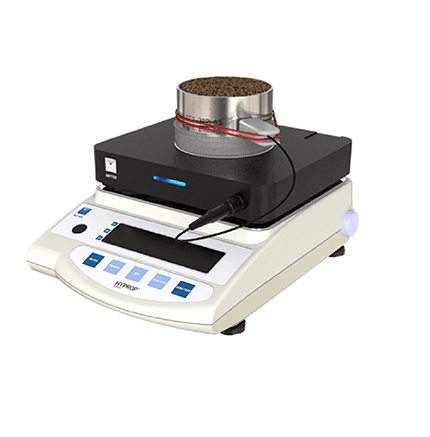Canada’s Instrumentation Leader Since 1946.


VARIOS generates thermal dryout curves automatically, so you can focus on other tasks. No manual process of getting the soil in and out of the oven. No repeated manual weighing of the sample. It's all taken care of for you, including data acquisition and analysis.
VARIOS generates thermal dryout curves automatically, so you can focus on other tasks. No manual process of getting the soil in and out of the oven. No repeated manual weighing of the sample. It’s all taken care of for you, including data acquisition and analysis. How?
Thermal conductivity – simplified
Constructing a thermal dryout curve is a painstaking process with the potential for human error. Time and effort go into acquiring and setting up the right components, plus you spend hours mixing samples, taking measurements, and fitting the data into a curve. What if you could have something more accurate, more reliable – and more automated? You can. Introducing VARIOS.
Save hours of labor
VARIOS generates thermal dryout curves automatically, so you can focus on other tasks. No manual process of getting the soil in and out of the oven. No repeated manual weighing of the sample. It’s all taken care of for you, including data acquisition and analysis. How?
Engineered for accuracy
VARIOS was specifically designed to create thousands of thermal dryout curves for the 400 mile Suedlink underground cable installation in Germany. So it’s engineered to be accurate, affordable, and low maintenance. It combines legendary TEMPOS and HYPROP technology to measure thermal conductivity as a function of soil water content. And it’s easy. Just insert the needle into a saturated soil sample, and put it on the balance. VARIOS automatically makes hundreds of precision thermal conductivity measurements while the water evaporates from the sample. The mean water content is calculated based on a continuous recording of the sample weight change. Powerful software does all the calculations, visualization, and fitting automatically, reducing the possibility of error.
Reliable and compliant all-in-one solution
The IEEE 442-2017 and ASTM D5334 compliant VARIOS uses the transient line heat source method. That means it’s a reliable measurement with short heating phases and low heating power. This reduces water movement due to heating and convection and reduces the measurement time. It automatically corrects for temperature drift, and heating power and time can be optimized for specific materials or properties. Plus, every dryout curve has hundreds of data points, so you get the detailed information you need to make the right decisions. And VARIOS is an all-in-one solution. It comes with everything you need to make complete thermal dryout curves including cables, installation tool, and software. There’s nothing else like it on the market.
Get complete curves—automatically
Get more done by getting automated. Remove the tedium and the human error out of thermal dryout curves with VARIOS. It automatically generates complete, high-resolution dry down curves with less effort and less cost, so you can focus on what you love.
Features
Copyright - 2025 - Hoskin Scientific